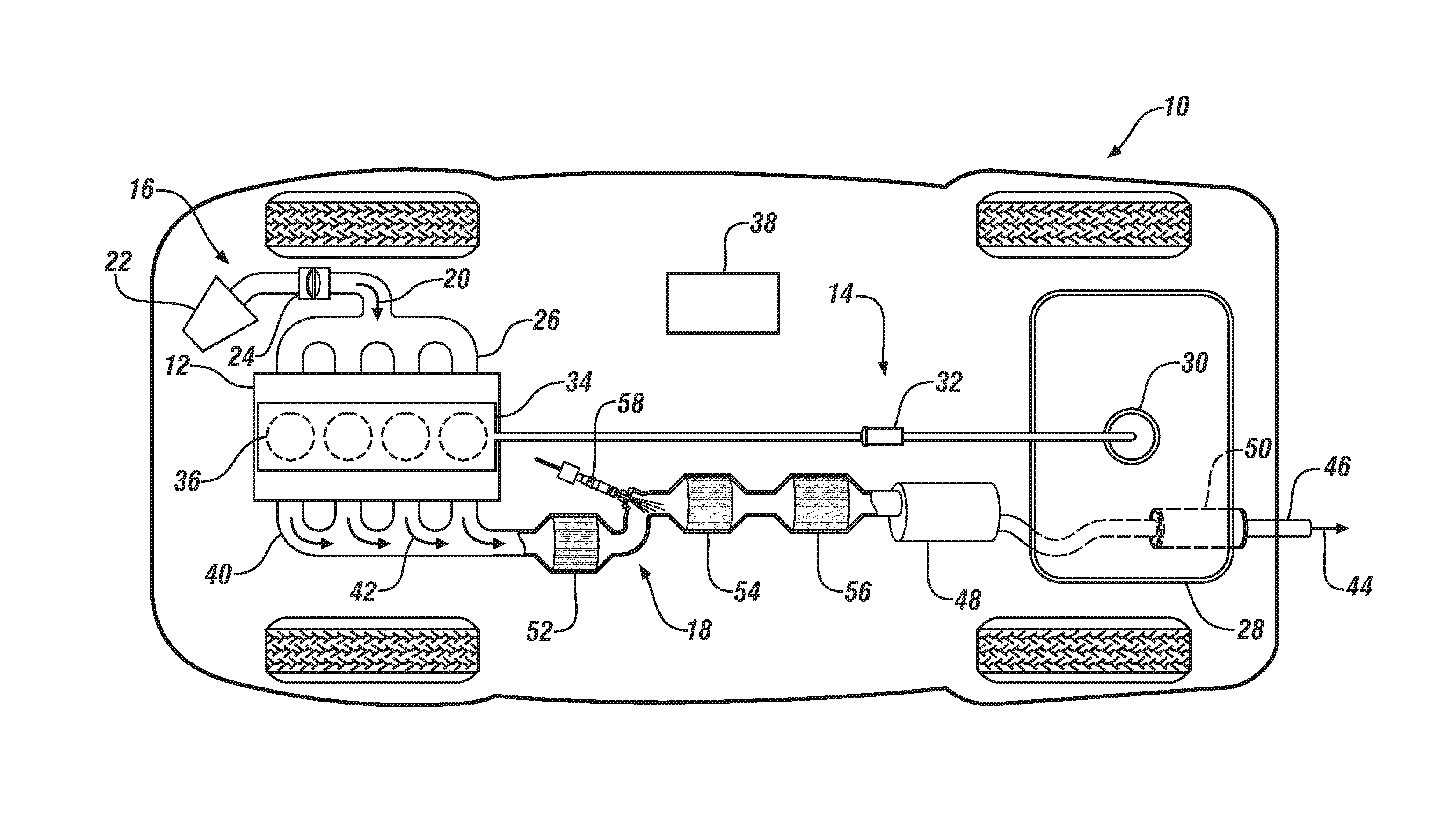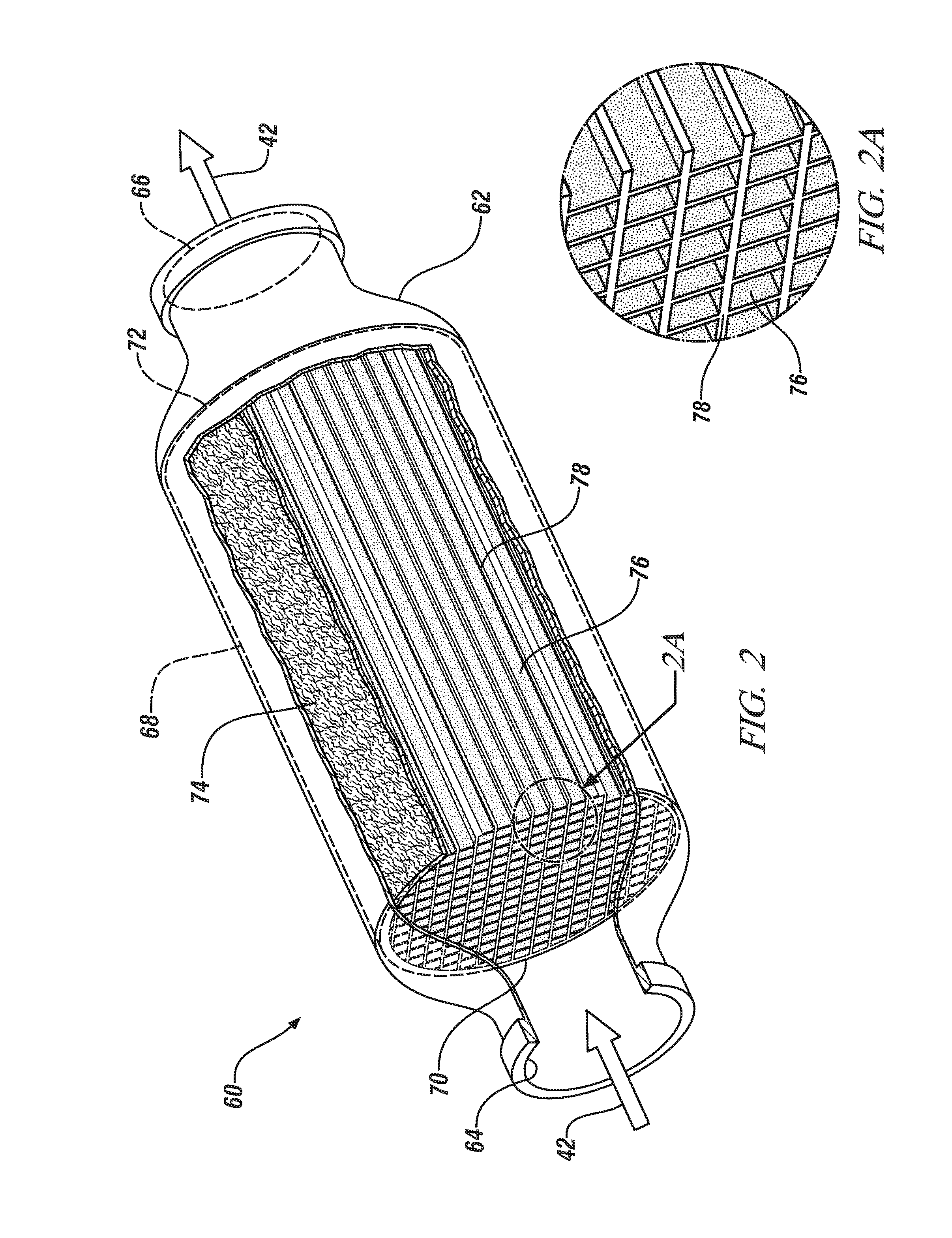Carbon monoxide-selective oxidation catalysts
a carbon monoxide and catalyst technology, applied in the field of catalyst materials, can solve the problem that the catalyst may not serve to effectively oxidize the co, and achieve the effect of fuel-lean operation and rapid resum
- Summary
- Abstract
- Description
- Claims
- Application Information
AI Technical Summary
Benefits of technology
Problems solved by technology
Method used
Image
Examples
example
[0042]In this example, particles of CeZrCuOX mixed oxides were prepared via a co-precipitation method. The CO and NH3 oxidation activity of the as-prepared CeZrCuOX particles was then compared to that of a conventional Pd / Rh TWC catalyst. The Pd / Rh catalyst was obtained from BASF and had a Pd to Rh molar ratio of 6:1.
[0043]A precursor solution was prepared by dissolving metal nitrates of (NH4)2Ce(NO3)6, Zr(NO3)4, and Cu(NO3)2 with molar ratios of 0.6:0.15:0.25 in deionized water at room temperature. Once the metal nitrates were dissolved in solution, the precursor solution was held with stirring for about 0.5 hours.
[0044]Next, a one molar sodium hydroxide solution was added to the precursor solution with vigorous stirring until its pH value reached 10 and a suspended co-precipitate of the base metals formed. The suspension was left at room temperature for 18 hours with mild stirring. Thereafter, the suspension was heated to 80° C. for 2 hours, and the co-precipitate was filtered fro...
PUM
| Property | Measurement | Unit |
|---|---|---|
| molar ratios | aaaaa | aaaaa |
| molar ratios | aaaaa | aaaaa |
| molar ratios | aaaaa | aaaaa |
Abstract
Description
Claims
Application Information
 Login to View More
Login to View More - R&D
- Intellectual Property
- Life Sciences
- Materials
- Tech Scout
- Unparalleled Data Quality
- Higher Quality Content
- 60% Fewer Hallucinations
Browse by: Latest US Patents, China's latest patents, Technical Efficacy Thesaurus, Application Domain, Technology Topic, Popular Technical Reports.
© 2025 PatSnap. All rights reserved.Legal|Privacy policy|Modern Slavery Act Transparency Statement|Sitemap|About US| Contact US: help@patsnap.com



